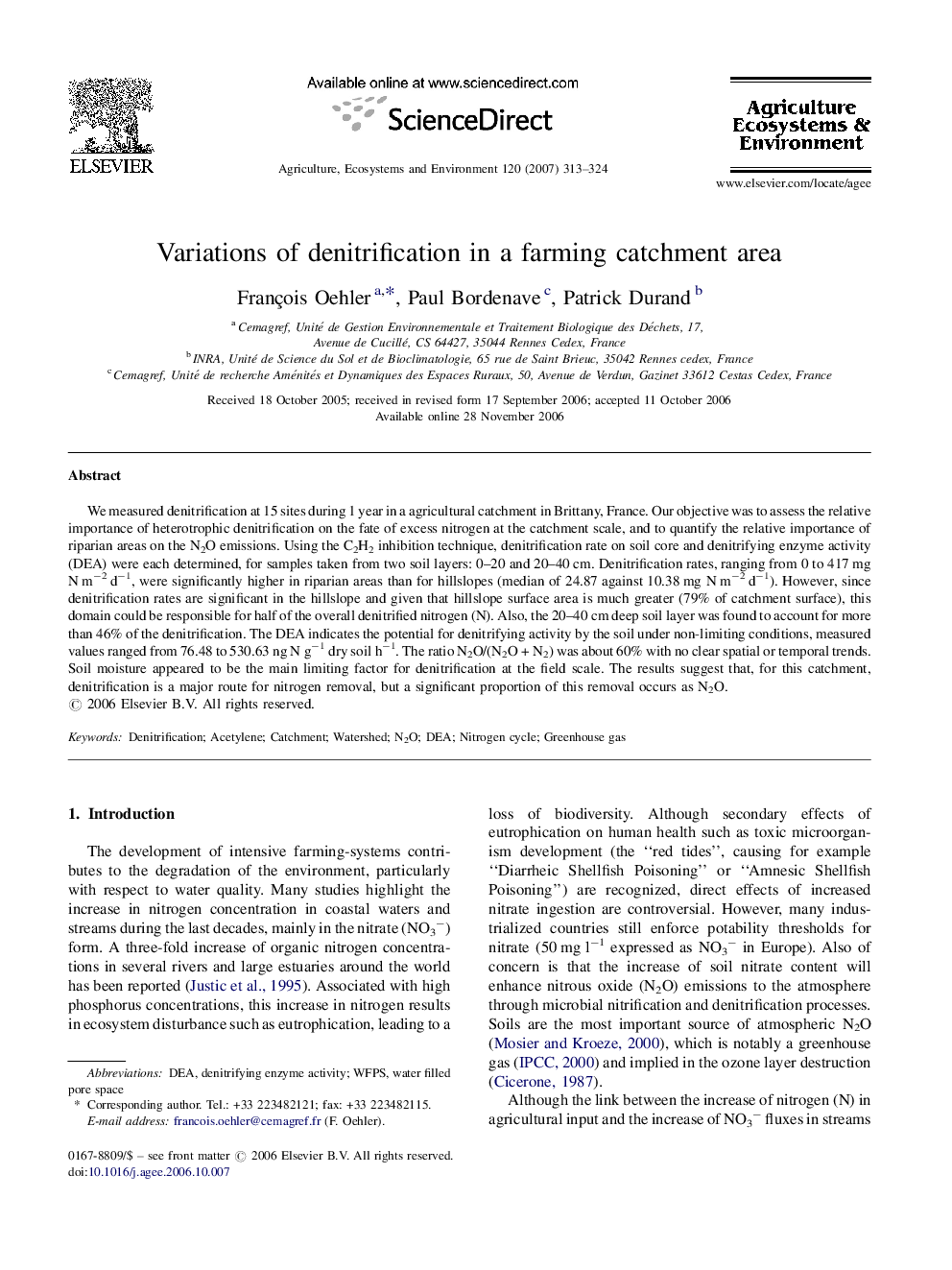| Article ID | Journal | Published Year | Pages | File Type |
|---|---|---|---|---|
| 2415612 | Agriculture, Ecosystems & Environment | 2007 | 12 Pages |
We measured denitrification at 15 sites during 1 year in a agricultural catchment in Brittany, France. Our objective was to assess the relative importance of heterotrophic denitrification on the fate of excess nitrogen at the catchment scale, and to quantify the relative importance of riparian areas on the N2O emissions. Using the C2H2 inhibition technique, denitrification rate on soil core and denitrifying enzyme activity (DEA) were each determined, for samples taken from two soil layers: 0–20 and 20–40 cm. Denitrification rates, ranging from 0 to 417 mg N m−2 d−1, were significantly higher in riparian areas than for hillslopes (median of 24.87 against 10.38 mg N m−2 d−1). However, since denitrification rates are significant in the hillslope and given that hillslope surface area is much greater (79% of catchment surface), this domain could be responsible for half of the overall denitrified nitrogen (N). Also, the 20–40 cm deep soil layer was found to account for more than 46% of the denitrification. The DEA indicates the potential for denitrifying activity by the soil under non-limiting conditions, measured values ranged from 76.48 to 530.63 ng N g−1 dry soil h−1. The ratio N2O/(N2O + N2) was about 60% with no clear spatial or temporal trends. Soil moisture appeared to be the main limiting factor for denitrification at the field scale. The results suggest that, for this catchment, denitrification is a major route for nitrogen removal, but a significant proportion of this removal occurs as N2O.
